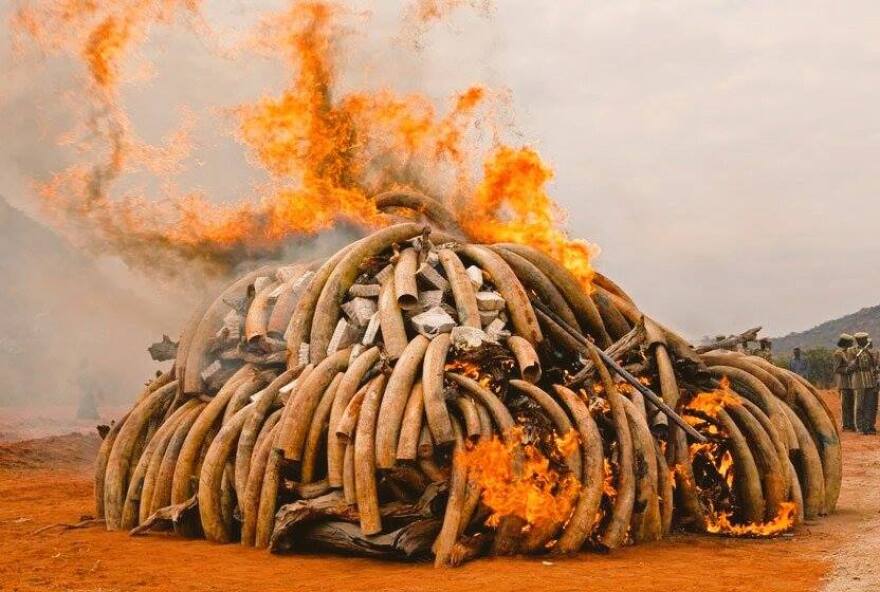On Saturday, April 30, 2016, the Kenya Wildlife Service in is planning to burn the largest amount of ivory in history. The event will take place at Nairobi National Park.
It’s a move to protect elephants and rhinos from being slaughtered for their tusks and horns.
An increase in poaching during the 1970s and 1980s prompted the Kenyan goverment to burn more than 13 U.S. tons of accumulated ivory in July, 1989. Later that year, the international trade in ivory was banned.
Saturday's event will once again be very public and serve to ensure that "no one will ever profit from this contraband," according to the organizers.
Cal Poly Professor Jennifer O’Leary is an honorary warden for the Kenya Wildlife Service and told KCBX that Kenya is doing well on controlling the act of poaching, but the area still serves as a hub for ivory transport and trade.
"Kenya is really against poaching of elephants and has taken huge efforts to find and confiscate that ivory, and that's really where this ivory comes from," said O'Leary.


